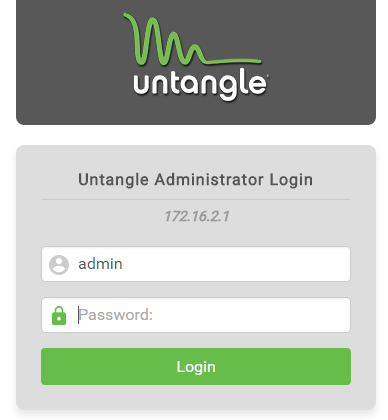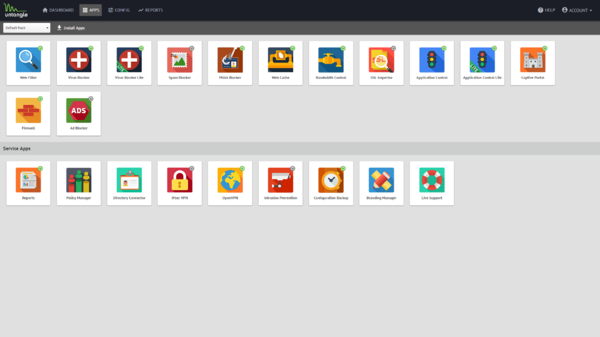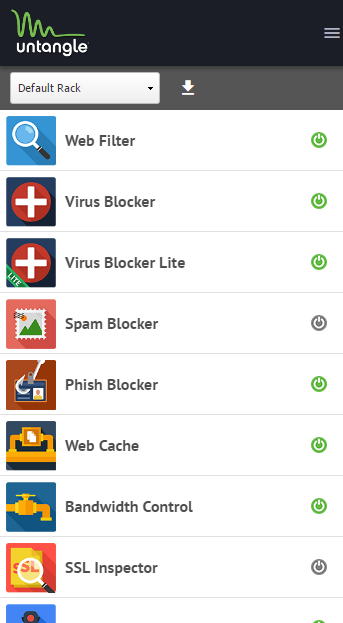12.1.0 Changelog
Overview
12.1 is a major new release. 12.1 has major admin interface innovations and continued improvements on the new dashboard and responsiveness of the admin interface. It also adds geolocation functionality, better reports, and improved performance.
Admin Interfaces
In 12.0 the user interface was drastically changed. This is a part of an ongoing effort to simplify and modernize the admin interface and make administration through PCs, tablets, phones, and the cloud all possible. In 12.1 we continued to work on this.
The first major change you will notice is the new login page and new navigation changes. 12.0 had both a left hand navigation menu and a top bar. 12.1 has only a top navigation menu. This is a much better option for a responsive UI as the top menu will adjust dynmically for the width of the display area.



The second major change is a new charting/graphing implementation. The new charts are better looking, faster, and have better functionality. This includes being able to zoom in and out, better smoothing, as well as dynamically resized bar charts. We also include several new types of charts like stacked bars and area charts.
-images
The dashboard has been greatly improved. The configuration on the dashboard is now much simpler. Admins can now easily add their favorite reports to the dashboard with one easy button. There are several new very useful widgets such as the "Network Layout."
-images
The setup wizards are now also responsive.
Reports
The reports navigation has been reimplemented. It is now completely responsive so reports can be viewed on a tablet or phone. It is also much more usable on a PC with better use of real-estate and easier navigation.
-images
Event entries and Report entries are no longer two separate entities. Event lists are now just a type of Report Entry. Additionally you can now create custom Event list report entries. For example, There is an existing "Blocked Web Events" event list report entry in Web Filter and you can add a Jimmys Blocked Web Events that shows only Jimmy's blocked web events. Like any report entry, you can add arbirtrary conditions an any attribute (client, hostname, username, interface, domain, site, policy, etc).
12.1 also adds a "session_minutes" table. Similar to sessions this stores all sessions, but has one row for every minute each session is alive and some byte stats about the session during that minutes. "sessions" has one row per session, but "session_minutes" would have 5 rows for a given session if that session was alive for 5 minutes. This allows the behavior of an individual session over its lifetime to be tracked. Previously we used the session creation time to group data. While accurate it provides a poor view of bandwidth overtime on a small scale, especially for long lived session. The new table allows for us to view bandwidth usage and behavior over time much more accurately and still be queryable/sliceable by any attribute like other reports.
-images
Geolocation
All sessions' IPs are now run through a geolocation lookup and attached to the session. You can view geolocation data in the session viewer. Sessions now have new geo attributes: client_latitude, client_latitude, client_country, server_latitude, server_latitude, server_country. Rules can now be created using geolocation data, and additionally this data can now be queried or displayed in reports so users can see when and where data is flowing.
-images
Performance
UDP layer-7 processing is very expensive. We added a "dynamic bypass" function for UDP such that if all layer-7 applications "release" interest in the session, the data will be passed at layer 3. For example, if you have only Application Control installed, once it has identified with certainty the application of a given UDP session, it will "release" the session. Once all applications release interest no more layer-7 scanning will occur and the data is passed at layer-3 without sending the data to userspace. This provides a massive speedup for UDP processing which will help on big and small sites alike.
We also officially switch to java 8 (OpenJDK) and the G1 garbage collector which should further improvement efficiency and performance.
Certificate Management
Certificate management in Config > Administration > Certificates has been redesigned. You can now upload arbitrary certificates to a list and choose which services will use the provided certificate. This should simplify the daunting task of reconfiguring the certificates on Untangle to suite all the different scenarios.
IPsec VPN
Added support for IKEv2. This is so admins with iOS devices that want to use forced on-demand VPN with certificate-based authentication.
Google / Facebook Authentication
Directory Connector now has the ability to authenitcate google and facebook accounts. This is useful for those that wish to autheticate captive portal users with their google or facebook accounts. Like any directory service, once a user logs in with their google/facebook account, the username for that specific host is set and all reports will contain the related google/facebook username.
IMPORTANT:
This functionality is experimental. It does not use the official OAUTH API because when accessing captive portal, the user does not yet have access to the internet. It uses an unofficial API technique to authenticate usernames. Google and/or Facebook may block authenticate at any time without notice. This technique also requires lots of memory and processing power on the server itself.
Minor Changes
- Like "devices" "hosts" are now also saved on disk so they are remembered after a reboot.
- Added ability to customize which administrators and/or reports users get alerts and report summary emails.
- Fix issue with rules specifying multiple MAC addresses
- Fixed some wireless issues with "Auto" channel selection on some cards
- Fixed some internationalization issues
- Fixed issues with dynamic time charts not supporting conditions
- The root password hash is now saved in settings so it will be set during a restore.
- We now log "http_referer" in the "http_events" table so you can see which web requests had a referer and which did not.
- Added "policy_rule_id" to each session so reports can show which policy rule matched which session.
- added support for mory 3-level country domains.